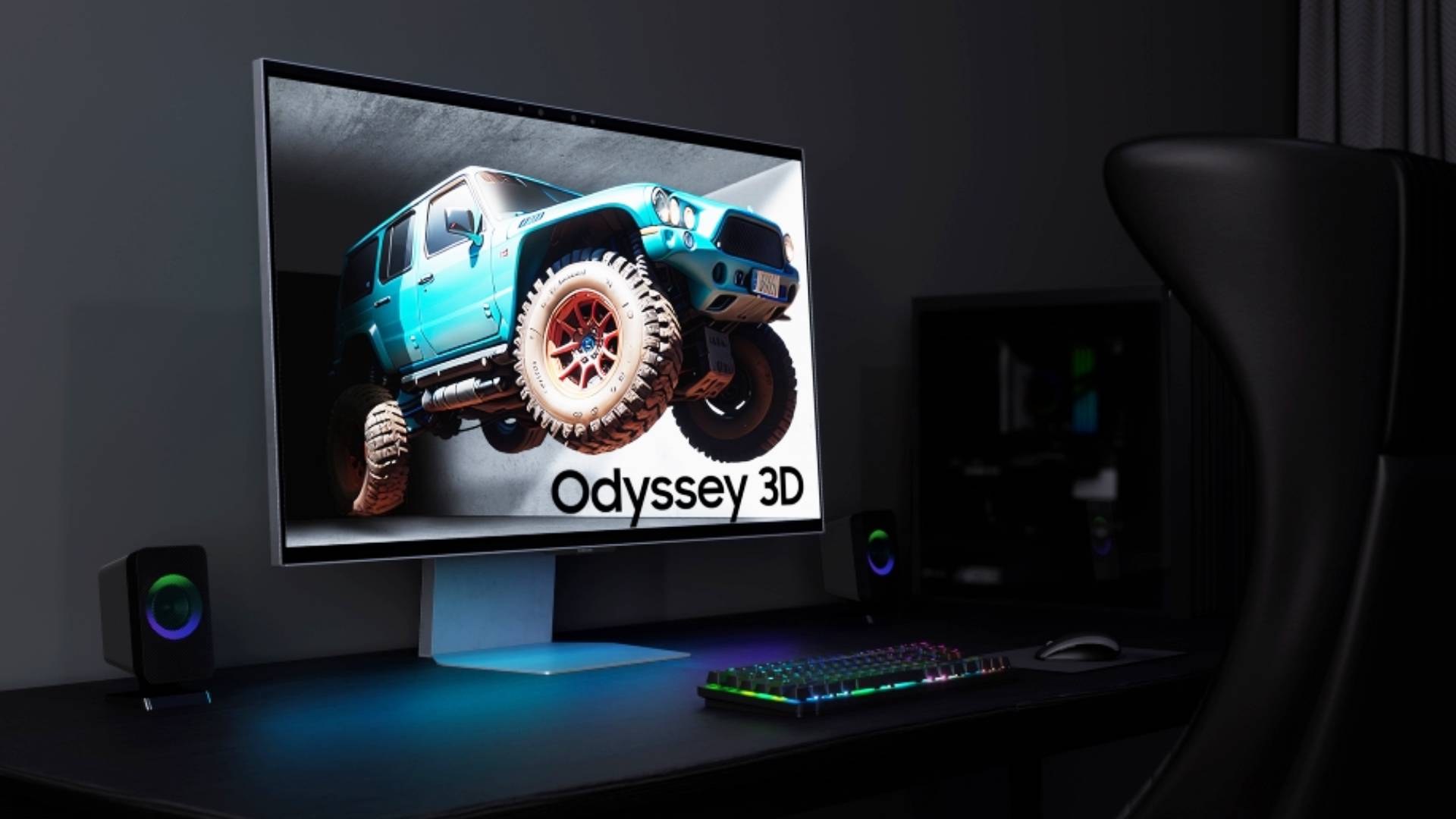Remember 3D displays? Well they're a thing again at CES thanks to the Samsung Odyssey 3D
No glasses required

CES 2025 is gearing up to be densely packed with the latest gadgets the tech world has to offer and Samsung has come prepared with the announcement that the Odyssey 3D gaming monitor will be shown off at this year's event. If you thought that 3D displays were long since relinquished to the shadow realm, you'd be wrong as the CES show floor will play host to the brand-new 3D display, alongside the Smart Monitor M9 with built-in AI features and the world's first 27-inch 4K OLED Samsung Odyssey gaming monitors with hefty 500Hz refresh rates.
Originally unveiled at Gamescom 2024, the Odyssey 3D (G90XF model) gaming monitor is exactly what it sounds like, a 3D addition to the Odyssey lineup. However, instead of requiring the use of often awkward-to-glasses like the 3D HD TVs of the 2010s, Samsung's new monitor does away with them entirely. Instead, the display utilizes a lenticular lens attached to the front panel to produce a 3D experience for your favorite games.

Hoon Chung, Executive Vice President of Enterprise Business Team, Visual Display Business at Samsung Electronics stated in a press release on August 21, 2024, during the monitor's initial unveiling that Samsung is committed to "leading the premium gaming monitor market by continuously developing cutting-edge technologies", however, the idea of a 3D display isn't exactly cutting edge at all.
In fact, CES as far back as 2008 played host to what is believed to be one of the very first 3D gaming monitors by the brand IZ3D. Plus, Acer beat Samsung to the punch with the Predator SpatialLabs View 27 monitor 3D monitor, with also forgoes the need of glasses. But what does make the Odyssey 3D an intriguing piece of tech is what it is, but how it works. According to the CES Samsung press release, the monitor uses light field display (LFD) technology to create 3D imagery using 2D visuals alongside its lenticular lens. These technologies, when combined with Eye Tracking performed by a built-in stereo camera, and View Mapping that continually adjusts the image to aid with depth perception, is what enables the glasses-free 3D experience.
While it will soon be available to take a spin for yourself on the CES 2025 show floor, Samsung has been quiet in other details surrounding the Odyssey 3D. Whether it comes to the original Gamescom 2024 unveiling or CES 2025, so far any info on what games work best with the new glasses-free 3D visuals has been scarce. Hopefully, this will be made available as CES gets rolling, however, I do worry that getting the best 3D result could involve game developers integrating support. A fact that could be a predicament for the niche tech, especially when other monitor brands aren't jumping back into the 3D space.
At least for the time being we do know that the Odyssey 3D will feature a 4K resolution, rapid 1ms gray-to gray (GTG) response time, and a refresh rate of 165Hz. Not only that, but for those not too fussed about 3D, Samsung states the display "seamlessly switch between 2D and 3D modes" as you see fit.
Check out our best gaming monitor guide if you're looking to give your PC gaming set up the display boost that it deserves. We've also rounded up the best curved monitors if you want more immersion and the best 4K monitors for those who put visuals above all else.
Sign up to the GamesRadar+ Newsletter
Weekly digests, tales from the communities you love, and more

Ever since I first held a NES controller in my hand I've been obsessed with gaming, and the hardware it runs on. I could hook up a NES and SNES to a telly, without instructions, before I could walk. Even now, nothing is more exciting then taking a console, or handheld, out the box for the first time and setting it up. This obsession transformed into a love of games and game music, which lead to my music degree and dream of becoming the Scottish Nobuo Uematsu. After sharing my love of games through music, I began to share my love through words on sites like TechRadar and iMore. This lead to becoming a Hardware staff writer for PCGamesN, and later the Senior Tech Writer for Dexerto, covering all things Steam Deck, PlayStation and Nintendo. With that experience, I was able to level up as Hardware Editor for GamesRadar+, where I'm still just as Nintendo, PlayStation and gaming tech obsessed as ever.


